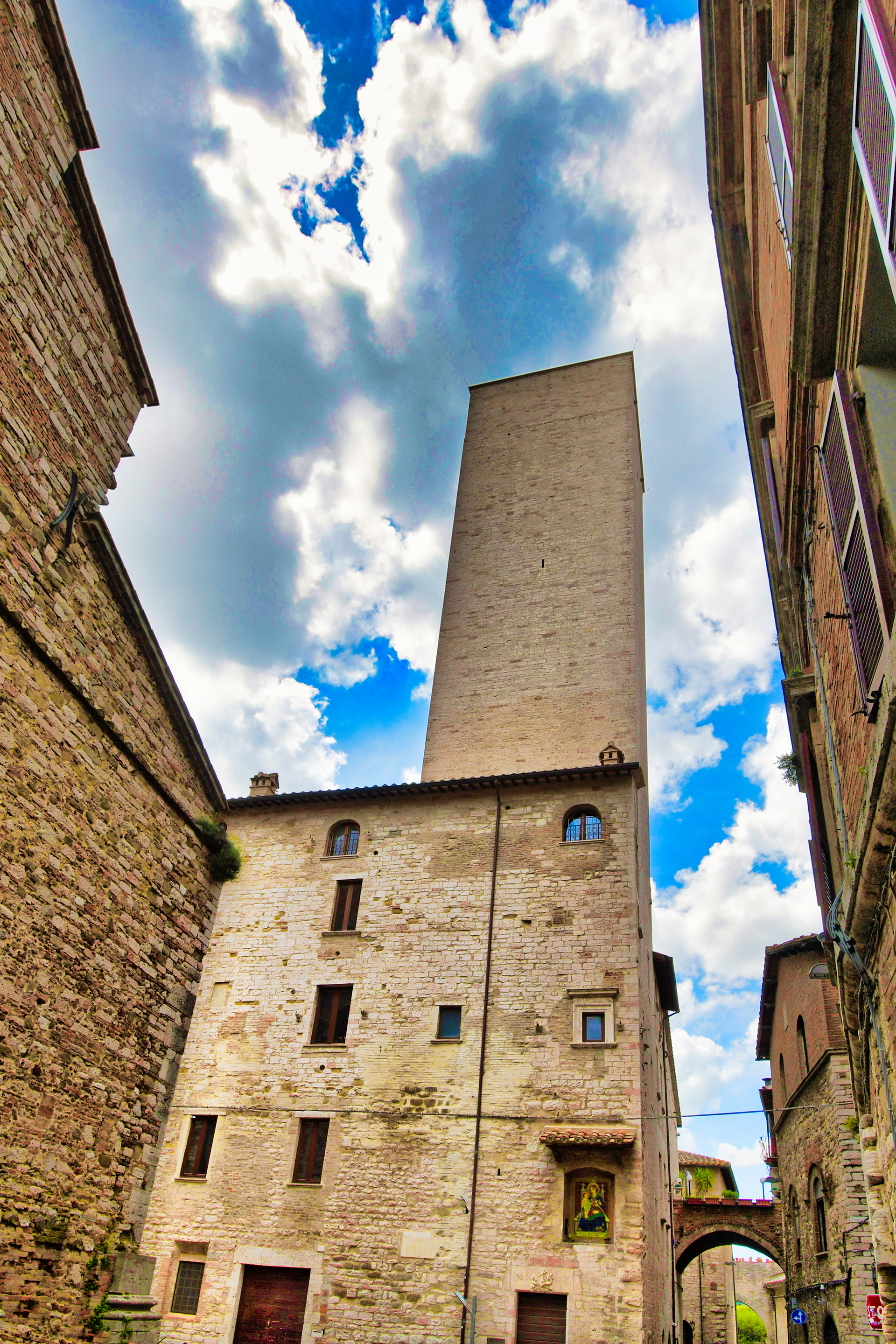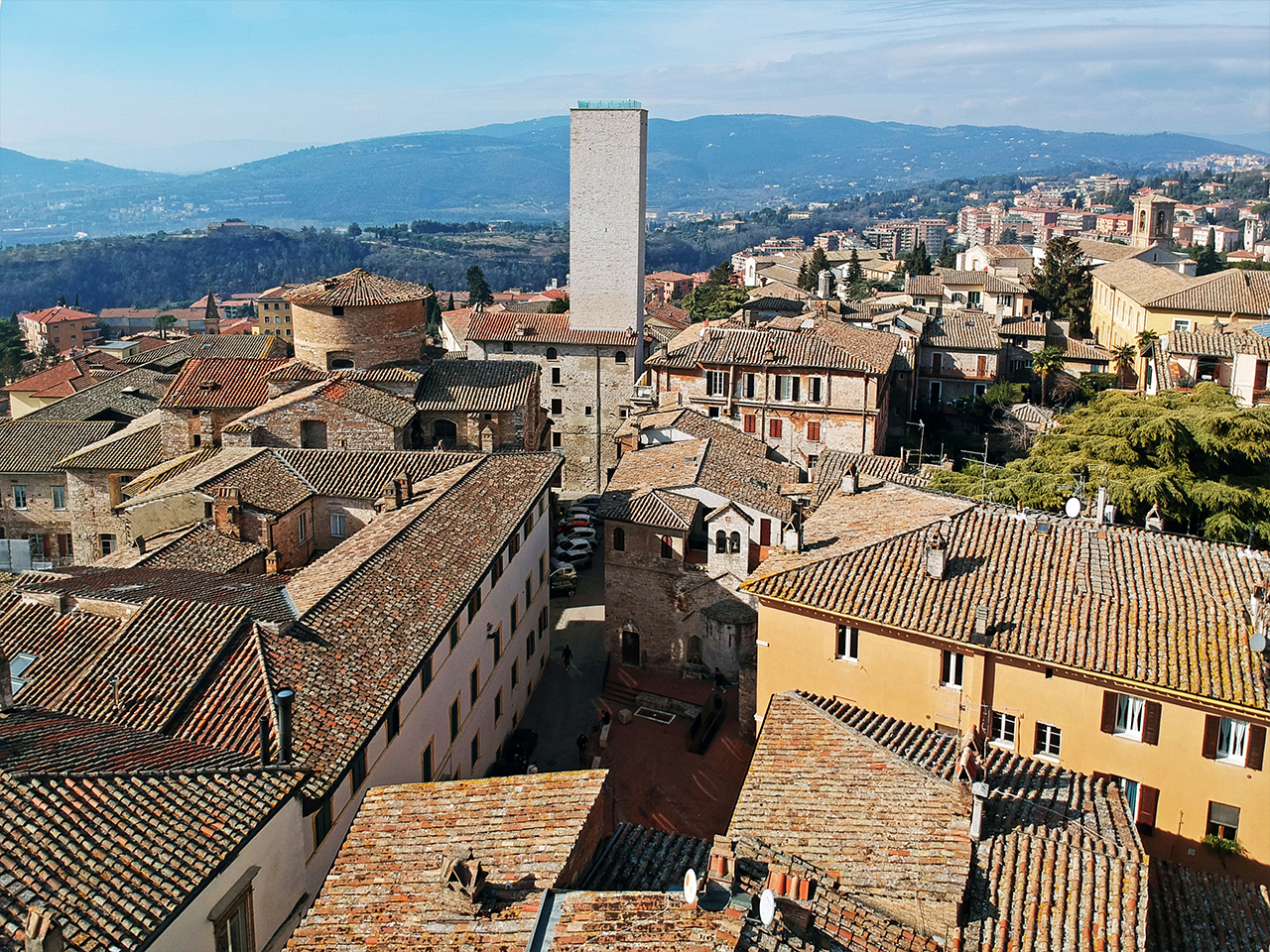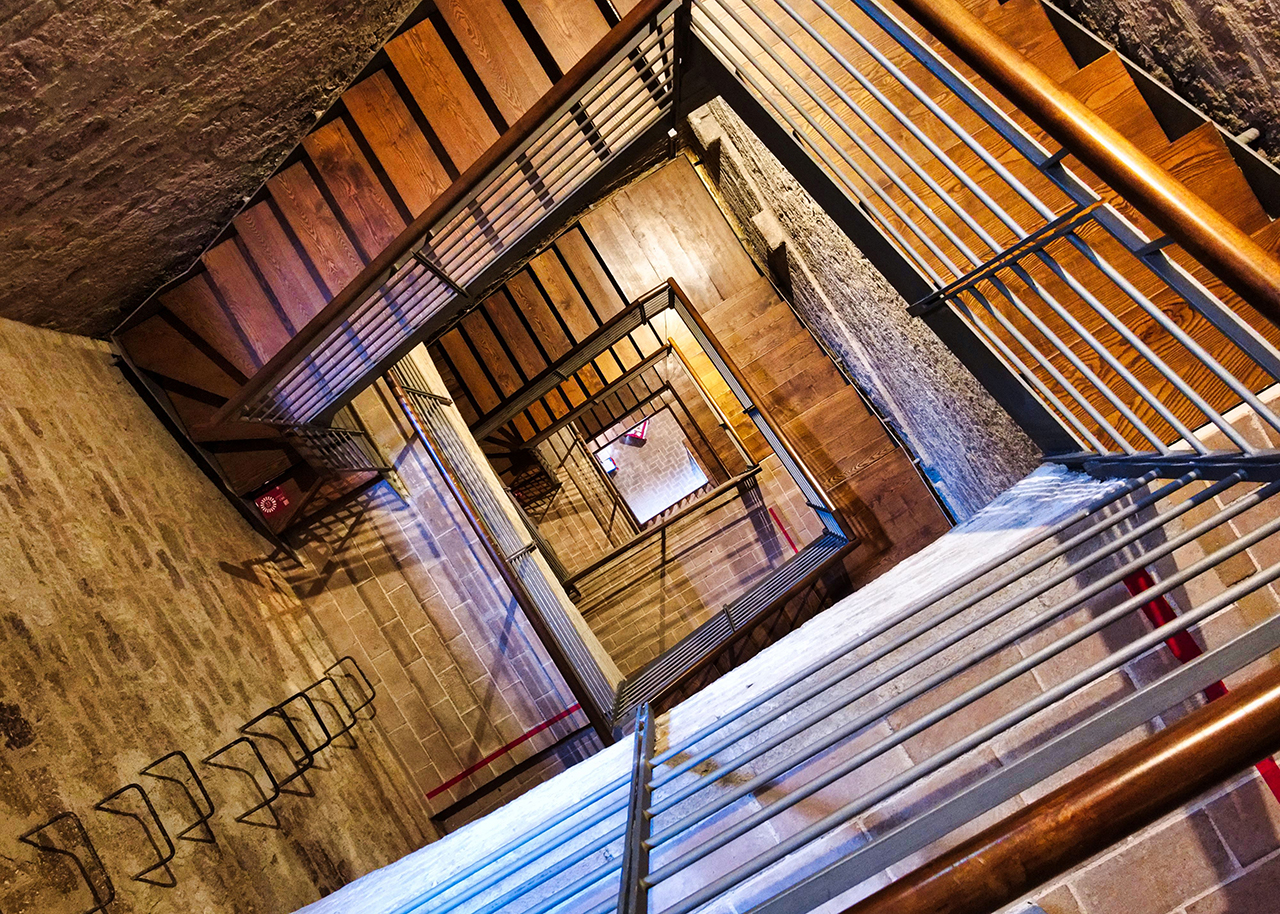

The Tower of Sciri. The only survivor, in its entirety, of an unspecified number of towers that in the Middle Ages characterized the urban aspect of the city of Perugia (scholars attest a number that oscillates between 42 and 64 urban towers). Between the 9th and 13th centuries, the tower represented a fundamental architectural element, as a military instrument, and as a representation of the noble prestige of the city families. And, as they were a sign of power, so the towers suffered decommissioning, reductions in height or destruction as a result of various events over time.
The tower, about 42 meters high (as attested by the reliefs of the Department of Civil and Environmental Engineering, University of Perugia), has all four sides free, with a cladding of white stone blocks of medium size, without any subsequent tampering, marked only by very few, tiny slits, so as to assume an almost monolithic appearance. The high quality of the workmanship and its homogeneity with the remains of other city towers, has led us to suppose the existence in Perugia of very specialized workforces in this type of construction. Inside it was divided with wooden balconies connected by ladders and metal stairs clinging to the walls. Using the European Regional Development Fund, the Municipality has carried out recovery works, lasting until 2015, aimed at tourist usability and public residential construction.
The tower, about 42 meters high (as attested by the reliefs of the Department of Civil and Environmental Engineering, University of Perugia), has all four sides free, with a cladding of white stone blocks of medium size, without any subsequent tampering, marked only by very few, tiny slits, so as to assume an almost monolithic appearance. The high quality of the workmanship and its homogeneity with the remains of other city towers, has led us to suppose the existence in Perugia of very specialized workforces in this type of construction. Inside it was divided with wooden balconies connected by ladders and metal stairs clinging to the walls. Using the European Regional Development Fund, the Municipality has carried out recovery works, lasting until 2015, aimed at tourist usability and public residential construction.


The Tower of Sciri seems to have been able to pass through the centuries unscathed, both because of the prestige of the ancient Oddi family, which had its dominions in this part of the city, and because the municipal statute of 1342 introduced the prohibition to destroy or damage all the towers without distinction. In 1476 Pope Sixtus IV also imposed pecuniary penalties and even excommunication, for those who had demolished the towers of the city of Perugia, considered its most beautiful ornament.About the origins of the tower, it is hypothesized that it was born towards the end of the thirteenth century, as a private tower of a palace owned by the Oddi, who kept it until 1483. Following the bloody clashes with the Baglioni, in October 1488, the Oddi had to leave the city. The Sciri, taking advantage of the situation, became owners of the turreted palace, and they are still remembered today in the name of the tower itself.The coat of arms of the Sciri, carved in bas-relief above the entrance of the tower, depicts a toothed band shield surmounted by a helmet with swirls, having a rooster’s foot as a crest. On the sides the letters N and I attributable to Nicolaus Iacobi of the Sciri, who lived between the end of the 1400s and the beginning of the 1500s. On the north side of the tower, about 10 meters from the ground, another coat of arms is visible, with a shield and a rampant lion, abraded, attributable to the Oddi family.In the second half of the 17th century, the tower and the building were donated by Countess Caterina Penna Degli Oddi to Sister Lucia Tartaglini da Cortona, who founded a boarding school for poor girls. The building housed a convent, under the direction of the priests of the Oratory of San Filippo Neri, until 2011, when the building became the property of ATER and the tower of the Municipality of Perugia. The tower has undergone a major restoration completed in 2015.


MONTHLY EVENTS
In Via dei Priori, and the Tower of Sciri, you can…

